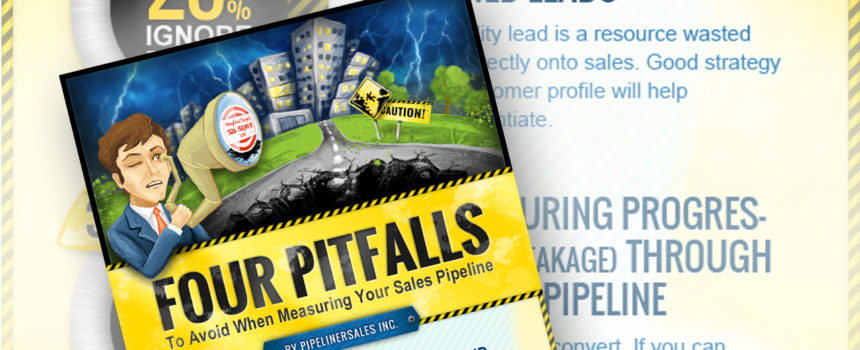Once you’ve created a robust sales process for your organisation, the next step is to ensure you can accurately measure it.
That’s because the figures you generate will provide you with the clarity you need to make better decisions and ensure smarter execution of your ideas.
In addition, if you can quantify the performance of your sales pipeline, you’ll be able to identify gaps, proactively tackle the challenges that kill your conversion rates and as a result, close more sales.
So how do you ensure you’re getting the most benefit from your measurement and analytics strategy?
A good starting point is to avoid these four common pitfalls…
#1: Only measuring your closure rate
For sure, your closure rate is a key performance metric. What’s more, it’s exciting to see deals being made that take you closer to achieving your sales targets.
However, if you only measure this one metric, you’re missing out on a whole range of other KPIs that could help you make more sales.
If you concentrate on closure rates, you end up only focusing on the sure-fire leads and opportunities that sit towards the bottom of your sales funnel or sales pipeline. And there’s a huge risk in this strategy. That’s because if you don’t keep an eye on the performance further up the sales funnel, you risk falling foul to the feast and famine syndrome. After all, in order to close a deal, you need to have leads to nurture in the first place. So if you lose sight of how many opportunities you’re generating, in time your sales success will diminish. In addition, by focusing primarily on the bottom of your funnel, you’ll only have a retrospective forecast. I.e. you may know what’s happened (or what will happen in the short-term) BUT you won’t have a clear view of where you’re going.
#2: Not differentiating between leads and qualified leads
This is an interesting pitfall that’s often tied into the relationship between marketing and sales.
There’s often a “love-hate” relationship between sales and marketing. In fact, although both departments are critical for the achievement of sales targets, it’s not uncommon for these departments to be on different planets.
If marketing’s job is to generate leads, and sale’s job is to nurture and close those leads, what happens when the leads that are generated are poor quality? A poor quality lead is unlikely to convert, and if this is passed directly onto sales, it’s possible that a lot of resource will be wasted. After all, not all leads are equal. For example some leads:
- Don’t have the budget
- Are not the decision-maker
- Are not ready to buy
- Are not your buyer persona
By having a robust strategy very early in your sales pipeline to help you differentiate between qualified and non-qualified leads, you’ll make it far easier to measure success and performance.
#3: Not measuring progression (and leakage) through the whole funnel
It can be tempting to focus all your attention on the sure-fire leads and opportunities (after all, each sale takes you closer to your sales target). However, by doing this you risk losing sight on what’s happening at the top of your sales funnel.
Clearly, not every lead will convert into a prospect. But if you can predict where you will lose prospects, you can work backwards to figure out how many prospects you need to have at each stage of your sales pipeline to achieve your overall sales target.
In addition to measuring the leakage at each stage of your sales process, you also need to know, on average, how quickly prospects will move from stage to stage. Without this information, you will find it very hard to accurately forecast.
#4: Looking at your sales pipeline as a static entity
Once you’ve created your sales pipeline and introduced the metrics needed to measure its performance, you can start to explore and model different scenarios.
If you don’t do this (and instead view your pipeline as static), you’ll miss out on opportunities to:
- Increase the velocity of your sales pipeline
- Model the impact of making improvements at different stages (so you can then decide where to focus resources)
- Drive growth
Over to you
What lessons have you learned about how to measure your sales pipeline? Please share your thoughts and comments below.




